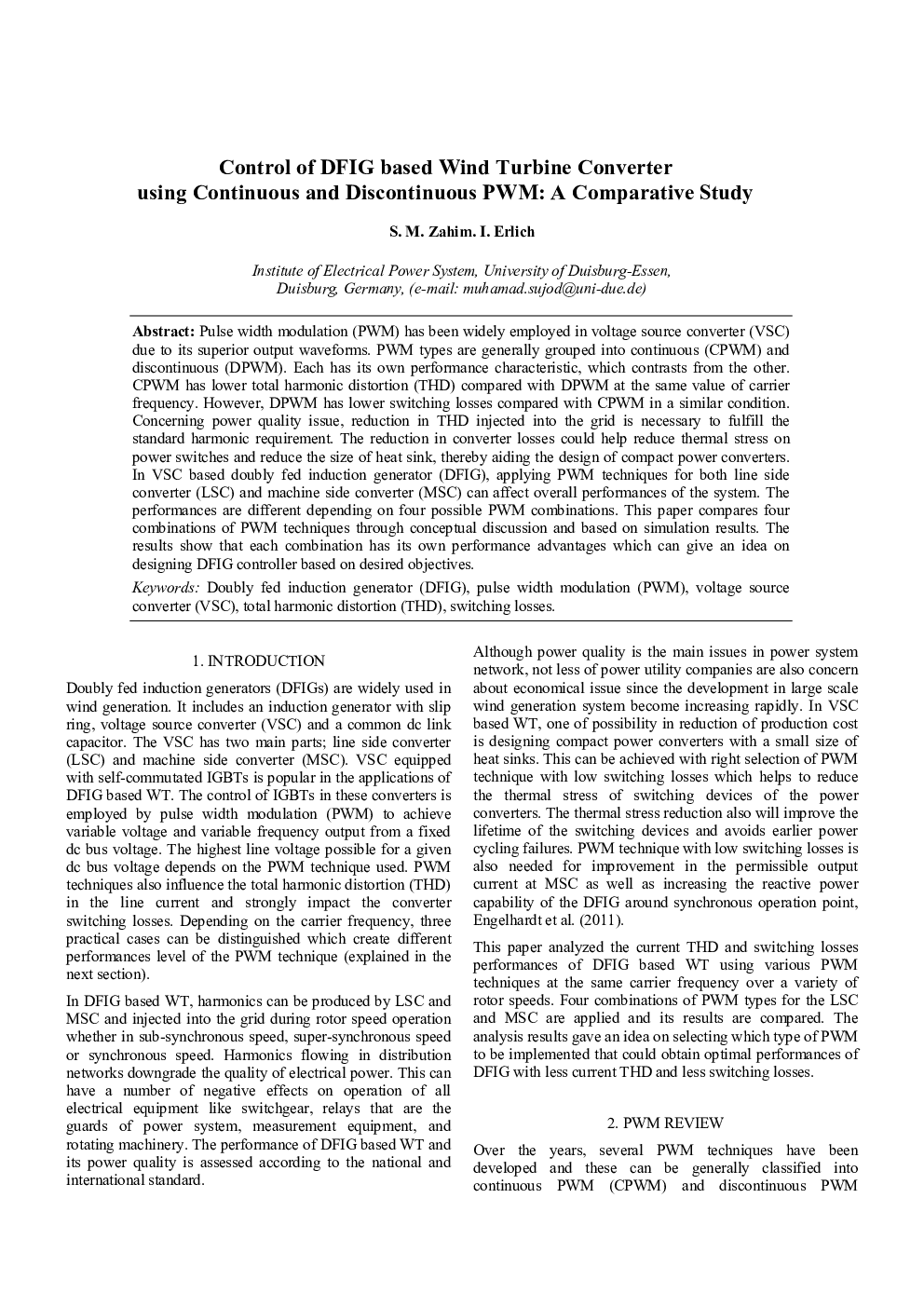| Article ID | Journal | Published Year | Pages | File Type |
|---|---|---|---|---|
| 716214 | IFAC Proceedings Volumes | 2012 | 6 Pages |
Pulse width modulation (PWM) has been widely employed in voltage source converter (VSC) due to its superior output waveforms. PWM types are generally grouped into continuous (CPWM) and discontinuous (DPWM). Each has its own performance characteristic, which contrasts from the other. CPWM has lower total harmonic distortion (THD) compared with DPWM at the same value of carrier frequency. However, DPWM has lower switching losses compared with CPWM in a similar condition. Concerning power quality issue, reduction in THD injected into the grid is necessary to fulfill the standard harmonic requirement. The reduction in converter losses could help reduce thermal stress on power switches and reduce the size of heat sink, thereby aiding the design of compact power converters. In VSC based doubly fed induction generator (DFIG), applying PWM techniques for both line side converter (LSC) and machine side converter (MSC) can affect overall performances of the system. The performances are different depending on four possible PWM combinations. This paper compares four combinations of PWM techniques through conceptual discussion and based on simulation results. The results show that each combination has its own performance advantages which can give an idea on designing DFIG controller based on desired objectives.
